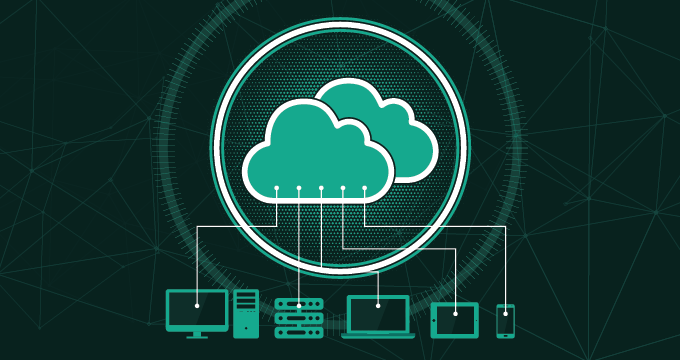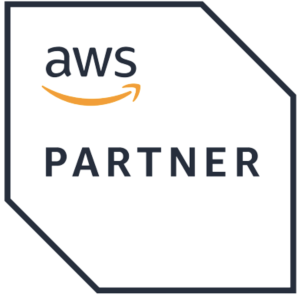The world of information technology has been evolving at a stunning pace during the past couple of decades. We’ve seen tremendous advancements when it comes to both hardware and software – faster CPUs and larger drives are coming out each year, and every so often new tools like Jenkins and Kubernetes come out to shake things up, make our lives a bit easier and our jobs a bit more interesting.
But nothing has probably had such a powerful impact on how we run our business environments today than the introduction of cloud computing.
In this series of articles, we’ll take a closer look at the Amazon Web Service (AWS), a pioneer of this technology and a leading public cloud provider that many of us rely on heavily today. We’ll explore how AWS works, what it can offer us and why it attracted so much attention in the first place. But first, let’s go back a little bit and look at how it all started.
Reinventing the Wheel
Historically, companies have utilized data centers to run resources for their business needs. This simply meant buying your own, usually pricey hardware, and storing it into racks (a physical framework meant to house servers and other equipment) at one of the available data centers provided by companies like Equinix, Coresite, Telehouse, etc.
Aside from the cost of the bare metal hardware and the physical space that had to be rented, companies also had to pay for the electricity they were using, as well as the occasional assistance of the data center technicians (which were very costly too) if urgent situations demanded so.
Overall, this expenditure required a sum of money big enough that only medium to large size enterprizes could easily afford, with smaller companies often struggling with the lack of resources.
The alternative to the classic model of data centers was to host your equipment on-premise, meaning to keep your servers and everything else within a physical space of your own company. While that was surely a cheaper option, data centers do provide high-quality redundant systems that were very much needed, as well as direct links to some large providers which you might require – so lowering the cost had other tradeoffs.
Either way, buying your own hardware was a capital expense that could put a serious dent in your yearly budget and was frowned upon by finance, upper management, or simply anyone outside of the system admin team who were just happy that they got to play with a new toy – whether the company actually needed it or not.
What Is Cloud Computing and Why Is It So Important?
Many who are not tech-savvy are having issues understanding the terminology that is being thrown around today, so let’s break it down and explain things in simple terms.
What Amazon decided to do was create their own data centers, along with all the necessary hardware (servers, network equipment, storage, etc) and provide us with that complete infrastructure, as a service – therefore the term IaaS. Cloud computing means utilizing this infrastructure, this enormous pool of resources, which is located somewhere “in the cloud”. The physical aspect of it simply isn’t our concern anymore.
What this meant for the companies of today was that instead of buying their own costly bare metal hardware, they could simply rent it (so no huge upfront costs) and pay only for what they were actually using (via monthly payments).
This on-demand availability of the cloud resources has revolutionized the way we look at infrastructure. More importantly, the move from the model of capital expenses to operational expenses has made it much more affordable to run your business environments, whether you are a large international enterprise or startup with only a few people on board.
What Is AWS and How Did It Start?
Amazon was a large company back in the early 2000s, and their infrastructure was vast. They also developed various services for internal use to help them with their core business needs. The idea arose to take that infrastructure, as well as the tools they were using, and have it out in public as an offer for others. In November 2004, AWS launched their first publicly available service – Simple Queue Service (SQS).
In 2006, they added two more crucial services, now strong pillars of their entire offering, Elastic Compute Cloud (EC2) and Simple Storage Service (S3). As they kept adding more services, AWS started to grow exponentially, with major clients like Netflix jumping on board.
Fast forward to 2018 and AWS has a revenue of around $25 billion, maintaining the lead as a public cloud provider, with Google Cloud Engine and Microsoft Azure trailing behind as its largest competitors.
Inside the AWS Offering
Today, AWS offers over 100 managed services (we’ll be focusing on their catalog of services in-depth in the near future), covering everything from block and object storage, databases, machine learning, business analytics, IOT, containerization, data warehousing, and many others. Each of these services is meant to help you remove the huge overhead of managing things, while allowing you to focus your time on your product instead.
In need of a relational database, but you don’t have dedicated administrators to patch and maintain it? You want to run Kubernetes cluster on AWS, but don’t want to spend time managing the control plane? Interested in machine learning but your company doesn’t have the budget to hire data scientists needed to work on your own artificial neural networks? With AWS, these issues are a thing of the past.
Summary
In this article, we took a brief overview of the history of cloud computing, with Amazon Web Services at its forefront. With their simple, but ingenious idea, they have created the public cloud offering, which has greatly benefited many of us. Having in mind the constant expansion in both infrastructure and the services they provide, it seems that there is a lot more we can expect in the future.
In part 2 of the series, we’ll be looking at AWS’s global infrastructure – the backbone of the entire Amazon cloud.
Jatheon Cloud is a fourth-generation, cloud-based email archiving platform that runs entirely on AWS. To learn more about Jatheon’s cloud archive, contact us or schedule a personal demo.
Read next: |











